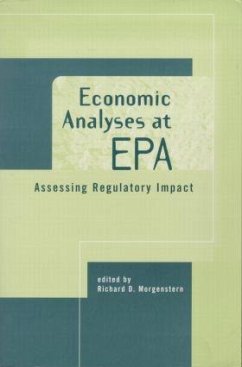For years, the Environmental Protection Agency has been conducting "economic analyses", also known as Regulatory Impact Analyses (RIAs), to asses the economic effects of its regulatory efforts. This important new volume explains the purposes, methods, and conclusions of these analyses, and it reveals the role they played in EPA decisionmaking over the past two decades. A dozen original case studies, developed by experts who actually worked of the RIAs, provide detailed examination of how the analyses were performed and used. These case studies dissect the analytic approaches employed in performing benefit-cost and cost-effectiveness analyses as well as critiquing the data. The contributors examine how the results were used (and abused) in actual decisionmaking. Richard D. Morgenstern provides historical and legal contexts for the analyses and describes new procedures developed by the Clinton administration. He synthesizes the case studies into thoughtful cross-cutting conclusions, drawing important lessons designed to improve future analyses.








